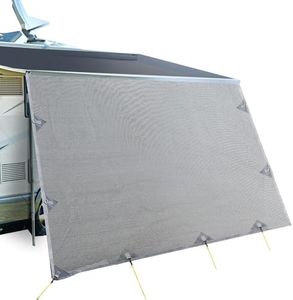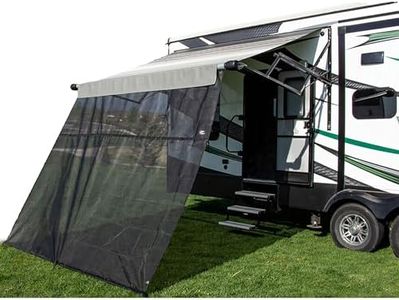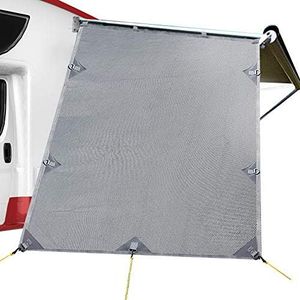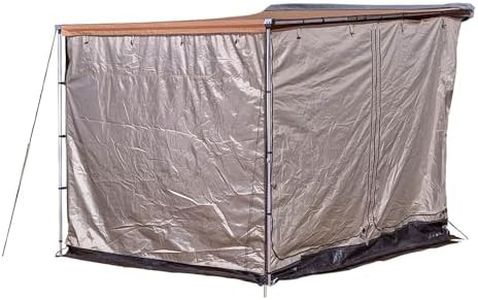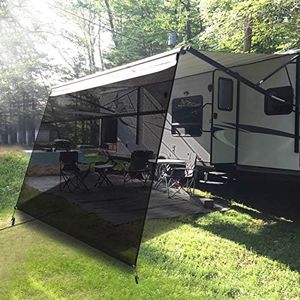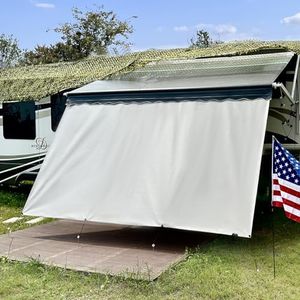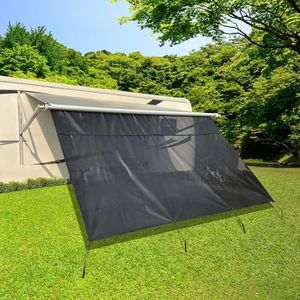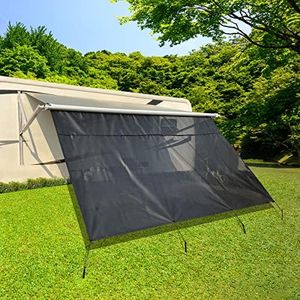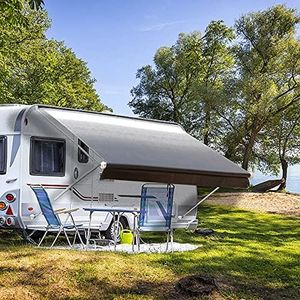We Use CookiesWe use cookies to enhance the security, performance,
functionality and for analytical and promotional activities. By continuing to browse this site you
are agreeing to our privacy policy
10 Best Camper Awning Screen
From leading brands and best sellers available on the web.Buying Guide for the Best Camper Awning Screen
Choosing the right camper awning screen is all about enhancing your outdoor experience while camping. A good awning screen turns the area outside your camper into a shaded, protected living space, keeping insects and harsh sunlight out while letting fresh air in. To make the best choice, think about how you'll use your awning: do you want a cozy dining spot, a bug-free sitting area, or maybe an extra sleeping space? Paying attention to a few important features will help you find an awning screen that fits your camper, your travel habits, and your comfort needs.Compatibility and SizeCompatibility and size refer to how well the awning screen fits your specific camper awning. This is important because an ill-fitting screen will be hard to set up, may flap in the wind, or let bugs and rain inside. Usually, size options are based on the length and height of standard awnings, and sometimes you’ll need to know the make and model of your awning. Screens usually fall into segments for small campers, standard RVs, and larger motorhomes. To pick the right one, measure the length of your awning when open and check the attachment type (rail, track, or hooks). Always match the screen size closely with your awning for a snug, effective fit.
Material QualityMaterial quality relates to what the screen walls and panels are made of—often fine mesh, polyester, or a mix designed for weather resistance. This matters because the durability, breathability, and ease of cleaning will vary. Lightweight meshes are good for simple bug protection and ventilation, while thicker or layered materials handle rain and wind better. When choosing, think about your camping locations: If you camp mostly in fair weather, lighter screens are easier to handle. For windier or wetter climates, sturdier materials will last longer and offer better shelter.
Ease of InstallationEase of installation describes how simple it is to attach and remove the awning screen from your camper. This is important because complex setups can be frustrating after a long day of travel. Some screens zip or snap on directly to the awning frame, while others involve poles or ropes for extra support. Simpler, one-piece screens are the fastest to use, while multi-part systems can cover more space but take more time to assemble. Consider your own patience and whether you camp in one spot for days or move often—frequent movers benefit from quick-setup options.
Ventilation and PrivacyVentilation and privacy refer to how well the screen lets air flow while shielding you from view. Good ventilation is crucial for comfort, especially in hot weather, and privacy panels let you enjoy your space without worrying about nearby campers. Screens range from very open mesh with little privacy to full panels that block views and offer weather protection. Decide how much breeze and light you want versus how much you value being hidden from others. If camping in busy areas, privacy may be more important; if you want to enjoy uninterrupted nature views, go for more open meshes.
Weather ProtectionWeather protection means how well the awning screen guards against wind, rain, and sun. Some screens have built-in sun blockers or roll-down weather panels for extra shade and rain control, while others offer basic bug protection only. If you plan to use your camper in all kinds of conditions, look for screens with adjustable panels and sturdy construction. For mainly summer or dry-weather use, lighter screens with less add-on features keep things simple and breezy.
